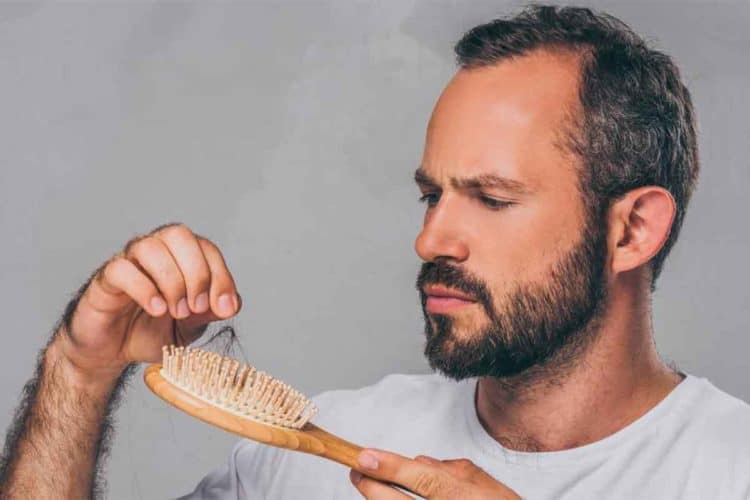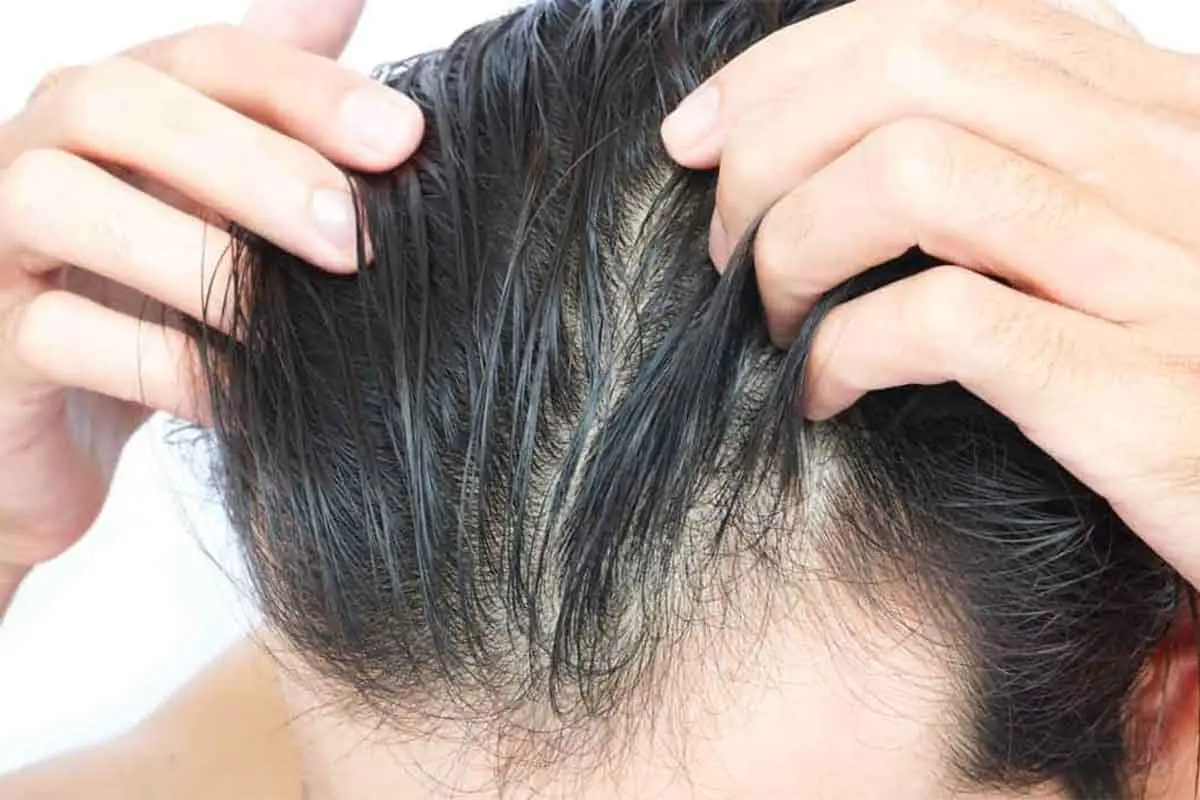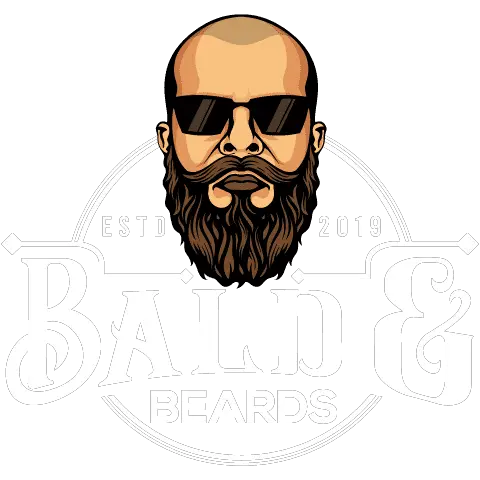Are you getting older and experiencing hair loss? If your hair has thinned or receded into a mature hairline, you may be experiencing DHT hair loss.
DHT (dihydrotestosterone) is a male hormone that weakens hair follicles and contributes to pattern baldness, AKA androgenic alopecia in men and women. DHT hair loss is often attributed to genetics, so you may also be affected if you notice family members with a receding hairline.
This guide shows you what DHT is and how it creates the hair loss problem. Some options are available to limit the effects of DHT and prevent yourself from balding – so keep reading.
What is DHT?
Dihydrotestosterone, or DHT, is a byproduct of testosterone. As an androgen, DHT is an important male sex hormone, and it’s extremely powerful. DHT is also different from many other male sex hormones.

Production
DHT is created through the 5-alpha Reductase enzyme, which converts a small part of your testosterone into DHT. It develops inside tissue like your liver, prostate, skin, and hair follicles.
Genetics
Suppose you have other relatives suffering from hair loss. In that case, DHT will likely bind to your androgen receptors in hair follicles and cause them to shrink slowly, weakening these follicles until they no longer produce new hair strands.
This process is also called miniaturization. Once complete and the hair follicle dies, the hair will no longer grow in that spot. Therefore, some bald patches start at the crown and corners of the forehead.
Another important fact to remember is that DHT is responsible for body hair growth. It’s the reason why you start growing hair on your back, chest, groin, and other areas.
Difference Between DHT and Testosterone
Testosterone is the most active and important sex hormone in the body. For men, it’s essential for sexual and physiological growth. In the human body, this hormone is responsible for:
- Producing and regulating hormone levels like androgen
- Maintaining sperm production
- Regulation of muscle mass and bone density
- Distributing fat throughout your body
- Maintaining your emotions and mood
Since DHT is a byproduct of testosterone, it makes sense that it would play a huge role in your sexual development.
However, one thing to remember about this androgen is that it’s much stronger. It can bind to receptors much longer, amplifying the effects of testosterone throughout your body.
How to Block DHT
Since doctors have found that DHT causes hair follicles to die and leads to baldness, DHT-blocking medications were developed to stop DHT from attaching to your scalp. Certain medications can block DHT and prevent further hair loss; your hair may start regrowing.
While there are many reasons for hair thinning and baldness, the main issue is increased levels of DHT. This male steroid can attach itself to your hair follicles, causing it to stop growing and slowly die producing hair.
DHT Blocking Medications
DHT inhibitors also slow down or stop the body’s production of DHT, like blocking creams, shampoos, and sprays that may effectively prevent hair loss.
Two medications prevent DHT from attacking 5-AR receptors, particularly in your hair follicles.
Prescription
Propecia (Finasteride) is a strong DHT blocker prescribed by a doctor.
Over the Counter
Rogaine (Minoxidil) can be at any pharmacy, Walmart, or Amazon without a prescription.
Finasteride
A doctor prescribes finasteride as a Proscar or Propecia (brand versions) oral medication. Studies show an 83 percent success in patients who are suffering from male pattern baldness.
When patients took a daily dose of finasteride, DHT was blocked from binding with hair follicles, leading to hair regrowth. However, once patients stopped using these medications, hair follicles began to break down and stop producing hair again.

FYI – When combined with minoxidil, finasteride increases in strength, so these two medications are often formulated together.
Understanding Finasteride and DHT
A new study by the Journal of the American Academy of Dermatology revealed that finasteride with minoxidil is the most effective medication currently for slowing and halting the spread of male pattern baldness.
Finasteride is scientifically classified into the category of drugs known as 5a-reductase inhibitors—these work by binding to the 5a-reductase enzymes and blocking them from converting testosterone into DHT. If you can picture a shield around hair follicles, this is essentially how finasteride protects your scalp and blocks hair loss before it can start.
Since DHT binds to receptors in the prostate, finasteride was created to help with enlarged prostate problems due to DHT. It wasn’t until the medication was studied that Merck scientists realized they could prevent baldness.
Taking Finasteride Can Fight Baldness
With a daily dose of Propecia or other medications with finasteride, those suffering from baldness can prevent more hair loss, but it will also regrow follicles damaged previously by DHT. This leads to thicker, healthier hair in as little as 3 months, but it could take as long as 12 months for the medication to show results.
You’ll need to visit a doctor and get a prescription to stop hair loss with medications. There are certain tests that your doctor must run first to ensure that you aren’t at risk for certain cancers, heart disease, or liver problems. There are also some common side effects with finasteride, including erectile dysfunction.
Minoxidil
Minoxidil is also known as Rogaine. It’s a topical or peripheral vasodilator that widens and loosens blood vessels so blood can pass through easily. While Rogaine may be prescribed for blood pressure, it can also be applied to your scalp to prevent hair loss.

Natural DHT Blockers
While finasteride and minoxidil are the main medicinal treatments prescribed to bald patients, other ways prevent DHT from attaching to your hair follicles.

Biotin
As an oral supplement, biotin boosts keratin levels, a protein found in nails, skin, and hair. Studies have shown that taking a B vitamin or biotin supplement can help you block DHT and keep your hair strong. It’s also present in egg yolks, whole grains, and nuts.
For the best hair growth results, 5,000mcg of Biotin Soft Gels by Sports Research is a must.
Pygeum Bark
There’s an herbal supplement known as pygeum that’s obtained from the bark of the African cherry tree. Formulated into an oral supplement, enlarged prostate sufferers (prostatitis) may take pygeum to relieve the swelling.
This pygeum also has a natural ability to block DHT. There’s very little research on this supplement, but those who use this treatment say it works and has helped prevent hair loss.
Pumpkin Seed Oil
In 2014, a study with 76 male participants suffering from male pattern baldness showed a 40 percent increase in scalp hair after male participants took 400 milligrams of pumpkin seed oil daily. They took the oil for 24 weeks.
Caffeine
There haven’t been too many studies on caffeine, but one small study from 2014 found that caffeine could regrow hair by making it longer and extending it past a normal growth phase. Caffeine was also shown to increase keratin production.
Saw Palmetto
Saw Palmetto is an herbal remedy known for boosting levels of testosterone naturally. Check out saw palmetto products on Amazon.
Vitamin B-12 and B-6
A good regimen of vitamins can help regrow hair. For starters, you may be suffering from a vitamin B deficiency, which can increase your hair loss. By taking a B-6 or B-12 vitamin, you can regain hair thickness. It’s been shown that B vitamins are important for your overall health, but they can restore lost hair follicles, too.
Side Effects of Blocking DHT
While studies have shown that most men don’t have issues when taking medications like finasteride, some studies have shown men suffer from erectile dysfunction. Around 9% of all participants in one study suffered from erectile dysfunction after taking Propecia.
To block the DHT hormone, you may experience higher testosterone levels. Since testosterone cannot convert to DHT with finasteride, your body will produce more testosterone. In another 2003 study, finasteride boosted testosterone levels by a moderate amount. For this reason, athletes competing in professional sports may not be able to take finasteride.
Some other side effects affecting sexual functions:
Low Sex Drive
Patients may not be interested in sex while taking finasteride medications. However, once men stopped taking finasteride, their sex drive returned to normal.
Weak Erections
Another side effect for some men included the inability to get or maintain an erection. While this only affected some finasteride patients, some men also reported they were not able to get an erection for several months, even after they stopped taking the medication.
However, the majority of men who take DHT blockers don’t suffer from these effects. Out of 3,177 patients, only 23 suffered adverse reactions to the medications. Even when men take five times the traditionally prescribed dosage, side effects aren’t typically reported.
Should You Block DHT to Prevent Baldness?
It’s scientifically proven that hair loss can be prevented with finasteride. However, only a doctor can tell you if you’re a suitable candidate for the medication. So, always seek medical advice first, as there are some risk factors for certain patients, including those who may be susceptible to prostate cancer.

In addition, if you have issues with testosterone or erectile dysfunction already, then you may be increasing your problems if you take finasteride. Your doctor will perform blood tests before prescribing finasteride, AKA Propecia. These tests can confirm risk factors that may cause more health problems.
Men suffering from baldness should start a daily dose of finasteride early if they notice hair loss. This prevents DHT from binding to your scalp and prevents follicles from dying. Once you start noticing bald patches, regrowing hair follicles can be difficult.
Final Thoughts
Several factors may contribute to your lack of hair growth when you start losing your hair. It could be that you have a genetic propensity for hair loss, and if so, it’s likely because DHT is on overdrive in your body. Some men have hair loss at such a young age that they start taking finasteride in their 20s.
The first step is to check with your doctor about what you can do to stop hair loss and go through any tests to see if you’re at risk for prostate problems or liver disease. Once cleared, you can try DHT-blocking medications to see if your hair follicles return.
FAQ
Can you regrow hair loss from DHT?
Dihydrotestosterone (DHT) inhibitors can effectively reduce DHT levels, promoting normal hair regrowth. Common treatments include medications that prevent the conversion of testosterone to DHT.
How do you fix DHT hair loss?
Finasteride, a prescription medication, effectively blocks DHT production and halts hair loss progression, including receding hairlines. It is widely used and approved for male pattern baldness treatment.
How do I know if DHT is causing hair loss?
DHT-related hair loss typically manifests as thinner, shorter hairs, primarily at the hairline and crown, leading to a receding hairline or bald spots. These symptoms are characteristic signs of DHT influence on hair follicles.
What causes DHT to rise?
Increased DHT levels are often linked to excessive testosterone production. Conditions like prostate issues, adrenal gland disorders, polycystic ovary syndrome (PCOS), and the use of anabolic steroids can elevate DHT concentrations.



